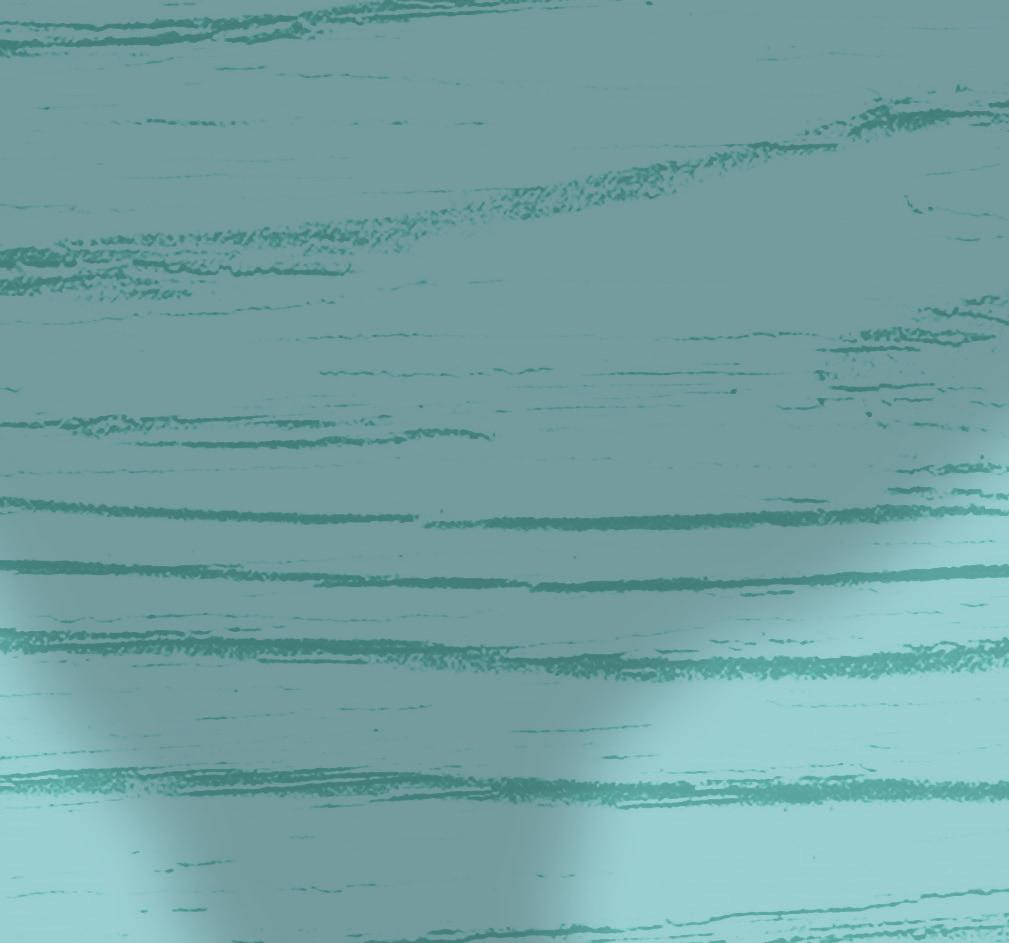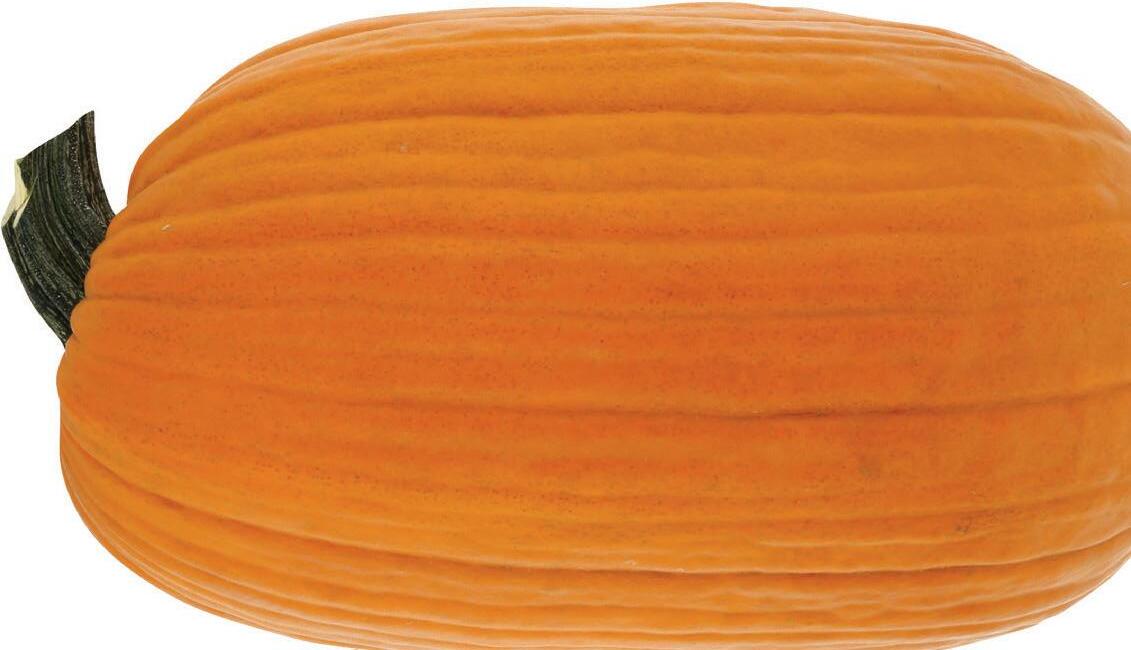AframNews.com
“Addressing Current & Historical Realities Affecting Our Community”






THE CRIME YOU’RE NOT “SUPPOSED” TO TALK ABOUT
By: Roy Douglas Malonson
For years, America has been fed the same phrase over and over again: “Black-on-Black crime.” It shows up in campaign speeches, on cable news, and in online debates. It has been used as a weapon, a talking point, and a way to pin blame. But here’s the truth nobody seems eager to repeat—crime is most o en intraracial. People usually harm the people
they live near, work with, and grow up around. at means white victims are overwhelmingly harmed by white o enders. In other words, White-on-White crime is real, it’s documented, and it’s happening every single day.
e Bureau of Justice Statistics has tracked this for decades. eir Crime on pg. 3



CLIFFORD WARD
By: Family
Mr. Ward, 79, went home to be with the Lord on October 5, 2025 in Houston, Texas surrounded by his family. Please keep the family in your prayers during this di cult time. Cli ord Ward of Houston, Texas was loved by everyone. As we bid farewell to this cherished soul, solace is taken in the memories held dear — the laughter shared, the wisdom imparted, the moments of quiet re ection in their presence. ough Cli ord may no longer walk among us, his spirit lives on in the echoes of his kindness, the warmth of his embrace, and the light of his enduring love. He will be remembered for his unwavering kindness, steady strength, and sense of humor. roughout his life he touched the hearts of many through his work, generosity, and deep love for his family. He leaves behind a legacy of compassion, integrity, and resilience. His presence will be deeply missed and fondly remembered by all who knew him.
EDITORIAL

A Revival of God Consciousness
Bobby Mills, Ph.D.
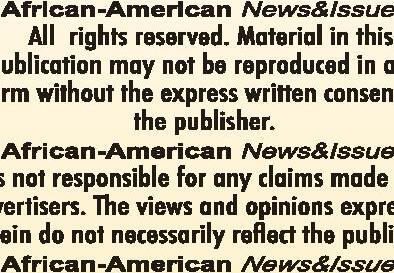



UNGODLY DANGEROUS TIMES
TO aframnews1982@gmail.com 713-682-1892

BOX 41820 Houston, TX 77241



America, the Bible speaks of “perilous times” when it will become too di cult for Christian service because of societal sinfulness. But “this know also, that in the last days perilous times shall come. For men shall become lovers of their ownselves, covetous, boasters, proud, blasphemers, disobedient to parents, unthankful, unholy, without natural a ection, trucebreakers, false accusers, incontinent, thankful, unholy, without natural a ection, trucebreakers, false accusers, incontinent, erce, despisers of those who are good, traitors, heady, highminded, lovers of pleasures more than lovers of God; having a form of godliness, but denying the power thereof; from such turn away.” (2 Timithy 3: 1-5). Glory to God in the highest, peace on earth, and good will towards all individuals. America, we are in a sense of leadership urgency.
President Trump and his MAGA-Cult Administration are dismantling the basic foundational governing principles and constitutional tenets of multi-cultural democracy in favor of White Privilege Autocracy, and we are living in dangerous ungodly times. Fear is a powerful motivator. Now is the time to respect God and avoid evil. King David knew that God would be our help for today and our hope for tomorrow. erefore, Read


he wrote: “ e Lord is my light and my salvation; whom shall, I fear? e Lord is the strength of my life; of whom shall I be afraid?” (Psalm 27: 1). Fear casts a dark shadow and imprisons individuals to sin. anks to Jesus Christ, the Righteous One, individuals can overcome fear simply by trusting in God, knowing full well that the earth belongs to the Lord, and the fullness thereof, not President Trump and his MAGA-Cult Followers. More importantly, “and as it is appointed unto men once to die, but a er this the judgment:” (Hebrews 9: 27a). So, don’t worry about those who are wrongdoers. Spiritual judgment is not a popular theme in American society, especially in politics. But, we all know, God hates sin, and it is His appointed time when He shall execute righteous judgment upon evildoers. Sadly, living in the presence of God is not easy in 2025, because it is not the desire of (77) million Americans. America, this we know: “evil men and seducers shall wax worse and worse, deceiving, and being deceived.” (2 Timothy 3: 13). For this reason, it is unrealistic to anticipate or expect that ine ective leaders will initiate positive reforms or change on their own accord. Hence, le alone they will become worse. In 2025, America is besieged by false MAGA-Cult political leadership socio-economic doctrines. However, we must not allow American multicultural democracy to become spiritually distorted from this eternal Truth: “that all men are created equal, that they are endowed by their Creator with


We Must Understand
GOVERNMENT SHUTDOWN HITS HOUSTON’S MINORITIES THE HARDEST
As Washington remains locked in political gridlock, the federal government shutdown is delivering a devastating blow to Houston’s minority communities. What many see as a partisan ght in D.C. has quickly become a nancial emergency for working families right here at home.

a nancial emergency
Across the Houston region, nearly 30,000 federal workers have been furloughed, according to the Houston Chronicle. Many of them are minorities who depend on these steady government jobs for stability, bene ts, and the promise of economic advancement. Nationally, more than 750,000 federal employees are going without pay — a majority from middle-class households that can’t a ord to miss a paycheck.
When those checks stop, the pain spreads fast. Local minority-owned businesses, barbershops, grocery stores, and daycare centers are already feeling the strain.





e same neighborhoods that worked overtime to keep Houston running during the pandemic are now being squeezed once again — this time by political dysfunction. e shutdown’s impact goes beyond paychecks. Vital lifelines like WIC and SNAP — programs that millions of Texans rely on for food and nutrition — are facing funding uncertainty. More than 3.4 million Texans use food assistance and 4.1 million depend on Medicaid or CHIP for healthcare, meaning the shutdown directly threatens basic needs in Black, Hispanic, and immigrant communities. Meanwhile, the Department of Education has furloughed 95% of its sta , stalling student aid, grants, and oversight — opportunities that countless minority students depend on to climb the economic ladder. Add to that the 41% of Health and Human Services workers sent home, and access to medical care in underserved areas becomes even more fragile. is isn’t just a political stalemate — it’s a crisis for minority families in Houston and across the country. When Washington fails to act, it’s the communities of color that pay the price.
If Congress doesn’t resolve this soon, the shutdown will leave lasting scars — not on Capitol Hill, but on the streets of Houston’s hardworking neighborhoods.
Crime Cont.
data shows that most violent crimes involve victims and o enders of the same race. It isn’t some hidden secret— it’s simple proximity. You are more likely to be hurt by someone in your community than by a stranger from across town. For white America, that means most victims of violent crime are hurt by white perpetrators. It’s measurable, it’s consistent, and it hasn’t changed much over time. Yet you almost never hear the phrase “White-on-White crime” on the nightly news. Why? Because the label was never about telling the truth. It was about building a narrative. e FBI’s arrest numbers tell the same story. White individuals make up the majority of arrests in the United States, including arrests for violent crimes. Part of that is because white Americans are the largest racial group in the country, but it’s also because crime usually happens close to home. In 2019, nearly six out of ten arrests for violent o enses were white suspects. e numbers don’t lie—violence is not a “Black issue.” It’s an American issue. And when we shi the conversation to mass shootings, the reality gets even more uncomfortable. While most gun violence never makes national news, mass shootings dominate the headlines. Schools, churches, grocery stores—places
that are supposed to feel safe. As of late September 2025, the Gun Violence Archive had already tracked hundreds of mass shootings this year. And when you look closely, many of those tragedies took place in white communities, carried out by white perpetrators.
Research from e Violence Project breaks it down further. A signi cant share of mass shooters in the United States have been white males. ese cases o en involve deep personal grievances, mental health struggles, and easy access to rearms.
e National Institute of Justice has pointed out patterns that repeat themselves again and again: warning signs, suicidal thoughts, anger, and alienation. But when the shooter is white and the victims are white, the media doesn’t call it what it is— White-on-White crime. Instead, the coverage leans into mental illness, isolation, or online radicalization. It avoids race altogether. Just look at Michigan a few days ago. On September 28, 2025, a 40-year-old white man
rammed his truck into an LDS church, set the building on re, and opened re inside. Families were torn apart by someone who looked just like them. It wasn’t some “outsider.” It was another clear case of violence from within the community.
So why do we never hear that phrase— White-on-White crime? Because it breaks the narrative. It forces America to face the truth that intraracial violence happens everywhere, not just in Black neighborhoods. It means politicians and commentators can’t point the nger at “them” and pretend the problem doesn’t exist among “us.” Talking about White-on-White crime means admitting that America has a much bigger issue than any single racial group. It means focusing on solutions—mental health care, domestic violence prevention, community-based programs, gun storage laws, and stopping illegal gun tra cking. ose answers aren’t ashy, but they save lives.
For the Black community, this conversation is long overdue.
For
decades, the phrase “Black-on-Black crime” has been used to stigmatize, as if criminality is part of our DNA. But the truth is clear: white communities are bleeding from within too. Violence is not about race—it’s about proximity, poverty, grievance, access to weapons, and broken systems. e real divide isn’t Black versus white. It’s people who want safe neighborhoods versus the broken status quo that keeps producing more funerals.
If we’re going to be honest, then we have to demand that the truth is told every time. Name the intraracial patterns. Say it for every group, not just for Black people. Study the warning signs and take prevention seriously. Hold the media accountable for its selective storytelling. And track the numbers through neutral sources so we can invest where change will actually make a di erence. e bottom line is simple. America doesn’t just have a “Blackon-Black” problem. It doesn’t just have a “White-on-White” problem either. What this country really has is an intraracial violence problem—and a narrative problem that hides it. Fixing both begins with telling the truth, even when it cuts against the headlines.

Only then can we ght for the solutions that keep families, churches, schools, and communities— of every color—alive.
BUSINESS

BLACK DOLLAR POWER
By: Fred Smith
For generations, the Black community has been the heartbeat of America’s economy — from the elds to the factories, from the barber shops to the boardrooms. Yet today, despite trillions in collective spending power, too little of that money stays within our own neighborhoods. e problem isn’t that we lack resources — it’s that we haven’t been uni ed in how we use them.
e truth is, the Black dollar circulates in our community for less than six hours before leaving — compared to days or even weeks in others. at means while we spend billions, we o en build wealth for everyone but ourselves.
e same streets where our grandparents owned thriving grocery stores and shops are now lined with businesses that don’t re ect or reinvest in us.
But here’s the part they don’t want us to know: we hold the keys to our own revival.
e Black dollar is not just economic — it’s cultural power. Every
time we buy Black, bank Black, or support Black media, we’re funding our own freedom. We’re reclaiming ownership of our narrative, our neighborhoods, and our next generation. Imagine if every Sunday, a er church, we all committed to spending just a portion of our money within our community. Imagine if every paycheck, we redirected even 10% toward Black-owned businesses, banks, and causes. e impact would be revolutionary. We could build schools, fund scholarships, restore neighborhoods, and create generational wealth — all by moving in unity. ey don’t fear our spending — they fear our strategy. Because once we start thinking collectively, our dollars become power, and our power becomes unstoppable. It’s time to remind the world: we are not consumers — we are creators. And when we move together, we move mountains.
THROUGH THE LENS OF TIME: BLACK HISTORY IS 24/7/365
1565. e Spanish take enslaved people to St. Augustine, the rst permanent settlement in what would later be the state of Florida.
1619. A Dutch ship with 20 enslaved Africans aboard arrives at the English colony of Jamestown, Virginia.
1650. e Yoruba Oyo Empire begins growing powerful in what would later be southwestern Nigeria. e empire reaches its height in the rst part of the 18th century.
1746. Poet and storyteller Lucy Terry, a enslaved teenager, composes the poem “Bars Fight,” the earliest existing poem by an African American.

HOUSTON
1760. Jupiter Hammon, an enslaved man from Connecticut, writes an autobiography o en considered to be the rst slave narrative.
1770. Crispus Attucks, who had formerly been enslaved, is killed by British soldiers in the

AUSTIN

TEXAS TAKEAWAY


The Houston Independent School District has decided to increase property taxes to fund storm repairs, with a final board vote scheduled for Wednesday.
DALLAS
Dallas police turned down a $25 million proposal to collaborate with ICE on immigration enforcement, according to the police chief.
SAN ANTONIO
On Tuesday, a U.S. district court judge issued a preliminary injunction blocking the University of Texas System from enforcing certain policies that a student coalition argues limit free speech on campus.
WACO
Amazon plans to construct a “last mile” delivery station in Robinson Business Park.
Despite a rocky first four months in office, many voters are still making up their minds about San Antonio Mayor Gina Ortiz Jones, according to a new poll.
A survey released Wednesday by UTSan Antonio’s Center for Public Opinion Research found that the largest portion of local voters — 47% — remain neutral, saying they neither approve nor disapprove of the new mayor’s performance so far. Meanwhile, public opinion on Jones appears to be evenly split. Twentyfive percent of voters approve of her performance, while 26% disapprove.



Katherine Johnson was a pioneering American mathematician whose brilliance and determination broke barriers in both science and society. Born in 1918, she was one of the rst African American women to work as a NASA scientist, playing a crucial role in the success of U.S. space missions during the Space Race. Her complex manual calculations of orbital mechanics were critical to the success of missions such as John Glenn’s orbital ight in 1962 and the Apollo 11 moon landing. Working in a time of racial segregation and gender discrimination, Johnson overcame tremendous obstacles through her intelligence, perseverance, and quiet courage. Her legacy continues to inspire generations in the elds of science, technology, engineering, and mathematics.






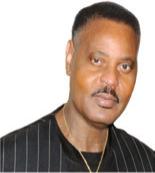


































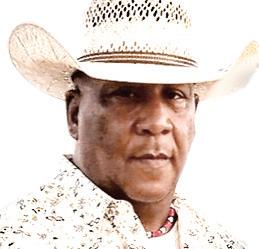
























STREET ART FOR MANKIND UNVEIL 2 MURALS OF JOHN BIGGERS PAINTINGS LOCAL
By: Ellison, David (Commissioner Pct 1
Harris County
Commissioner Rodney Ellis, Texas Southern University and the art community on Tuesday, Oct. 7 honored the legacy of the late Dr. John Biggers, founder of TSU’s art department, by unveiling two murals
celebrated the activism of the TSU students who held Houston’s rst civil rights movement sit-in at a Houston grocery store in 1960.
“Today we celebrate two kinds of courage that changed Harris County: the vision of Dr. John

students who sat down at a lunch counter so all of us could stand taller,”
Commissioner Ellis said. “ ose students were: Deanna Lott, Guy Boudouis, John Hutchins, Jessis Parvis, Curtis Graves, Holly
Brown, and Eldrewey Stearns.


replicating his paintings.



e unveiling also


the vision of Dr. John Biggers and the resolve of TSU


and Pete Hogrobrooks, Clarence Coleman, Eddie Rigsby, Pat Patterson, Doris


“Biggers painted our dignity onto walls; those students enshrined our dignity into law. Biggers taught us how to envision freedom; the students showed us how to practice it.”
e two murals, Commissioner Ellis said, are part of a Community Bene ts Agreement between his o ce and TSU—an investment in beauti cation, history, and public art that strengthens our community.
Biggers (1924–2001) was a pioneering artist and educator who transformed the landscape of African American art. In 1949, he came to Houston
to establish the art program at TSU, where he taught for more than three decades. His work – deeply in uenced by African traditions, Mexican muralism, and the African American experience – made him one of the most important visual storytellers of the 20th century.
“John Biggers’ art is the heartbeat of Texas Southern University and the city of Houston,” said Dr. Alvia Wardlaw, Director of the University Museum at TSU and longtime colleague of Biggers.
“His vision helped shape a generation of artists and thinkers, weaving African heritage, African American experience,
and universal human truths into every brushstroke. ese murals are more than images—they are living testaments to his legacy, inspiring all of us to see ourselves as part of a larger story of unity, resilience, and creativity,” Dr. Wardlaw added.
e murals – “Quilting Party” and “Jubilee” –are part of a series of Biggers replicas that raise awareness of the muralist’s legacy.
e artwork was curated by SAM and made possible by Commissioner Ellis, Dr. Wardlaw, and David T. Hales, trustee for Hazel Biggers. With the










